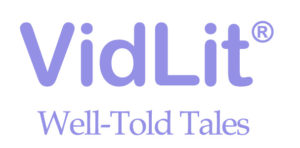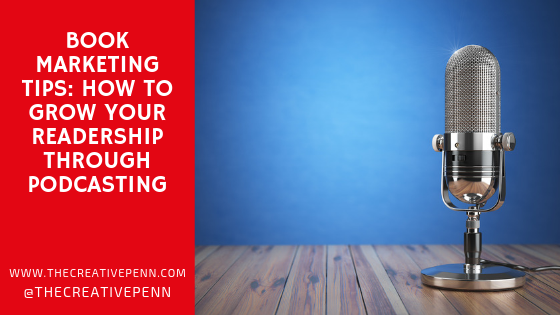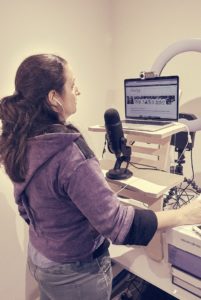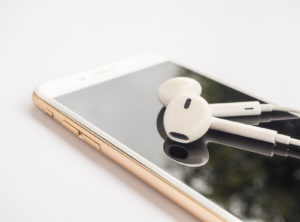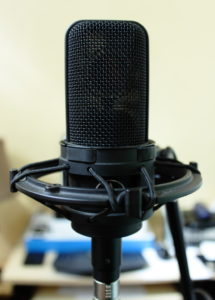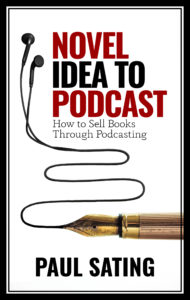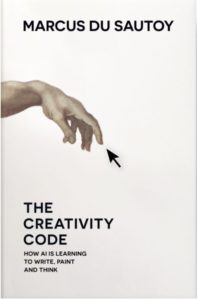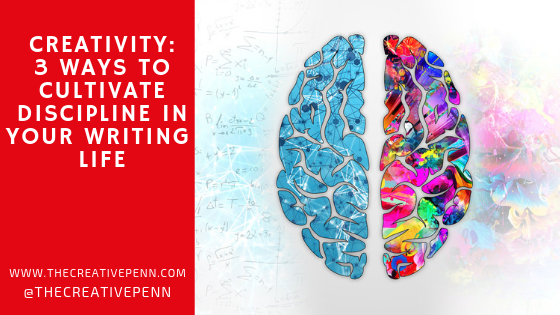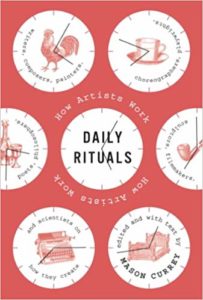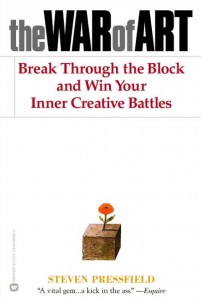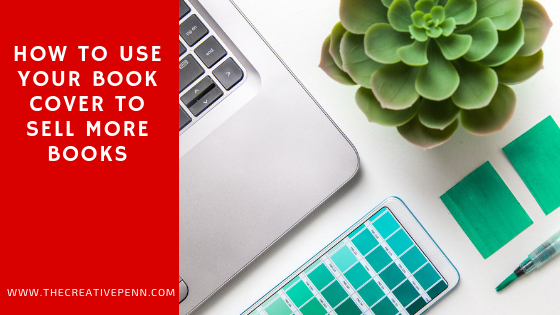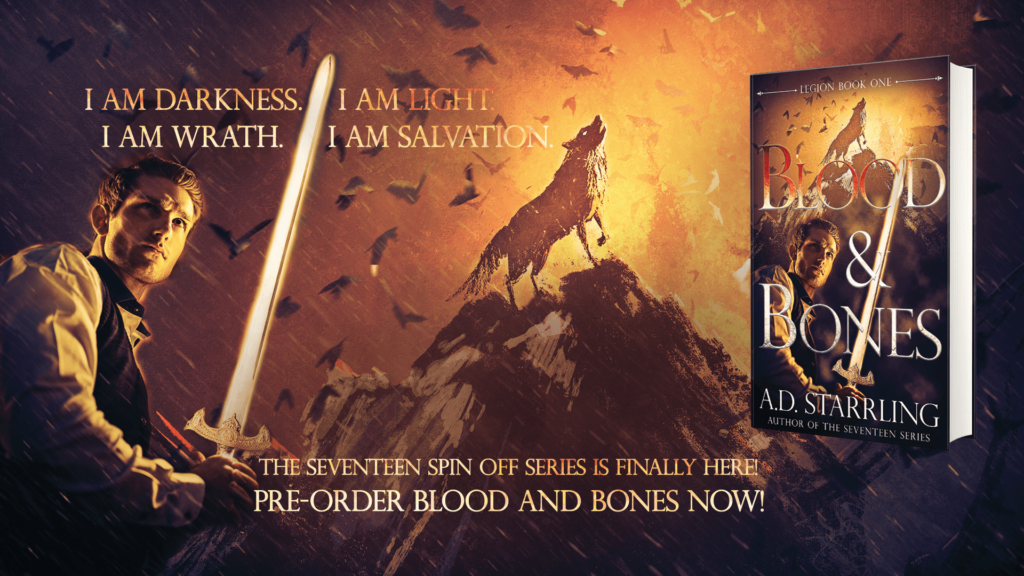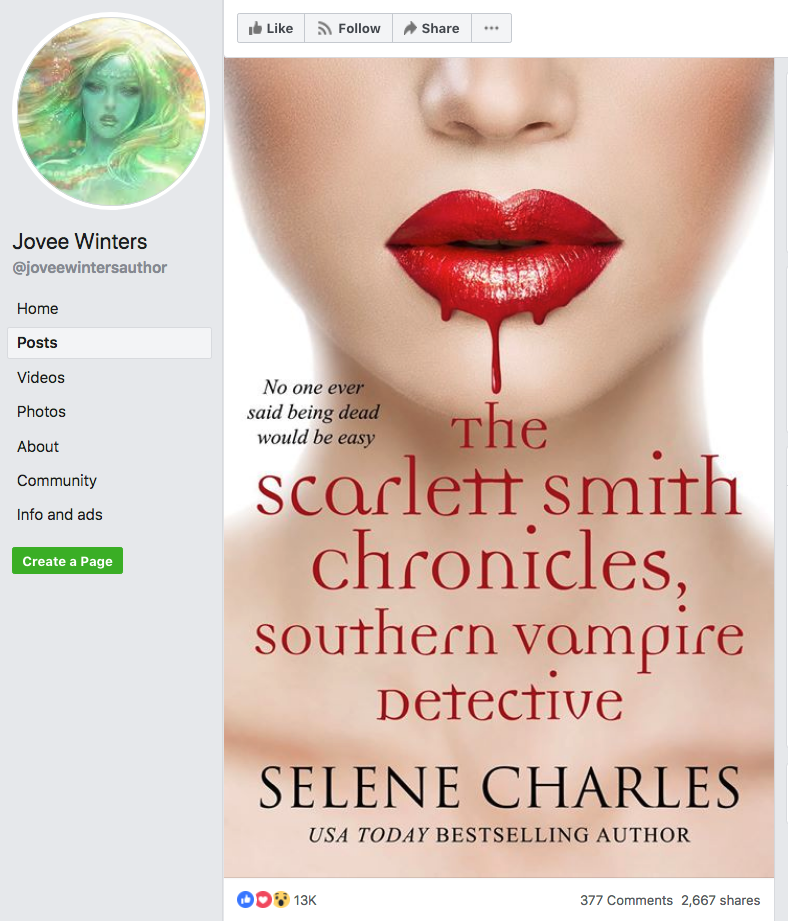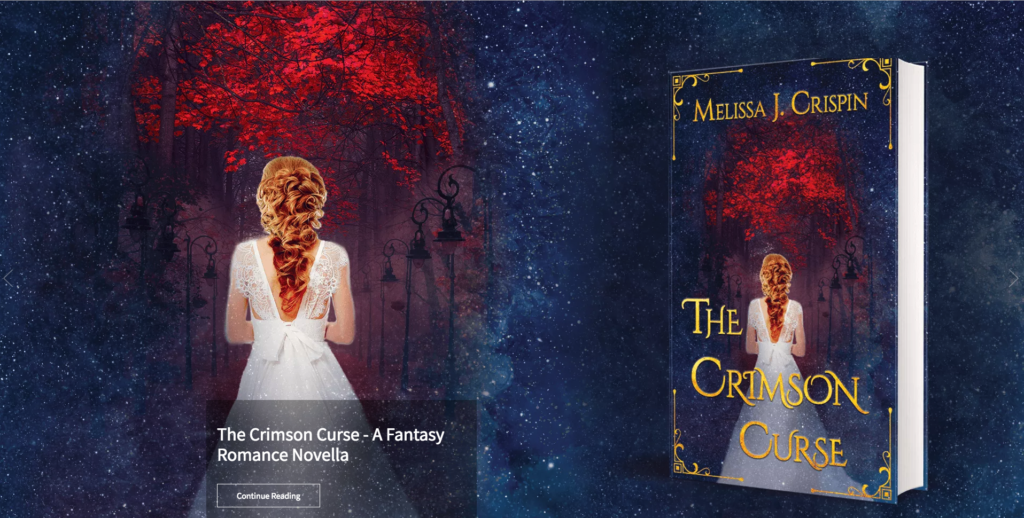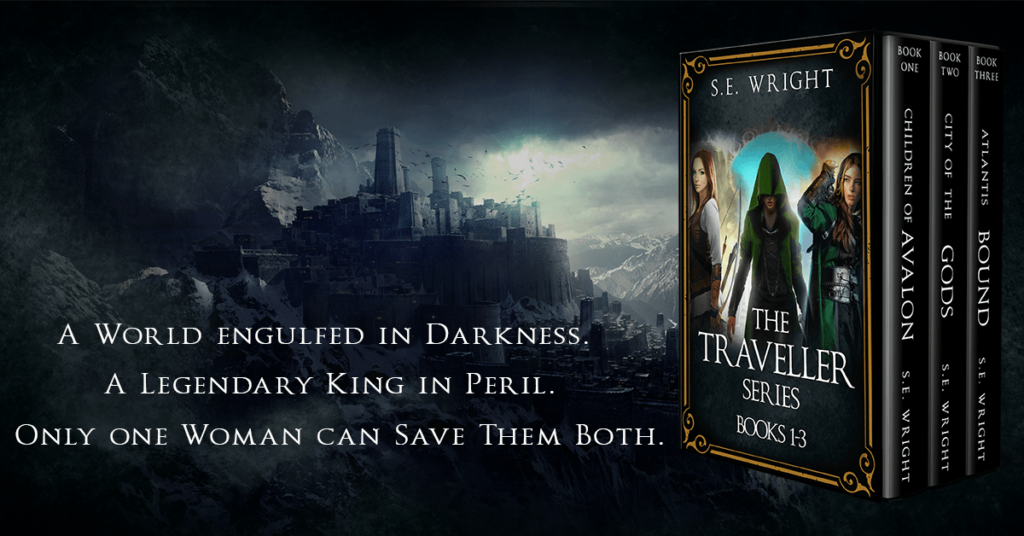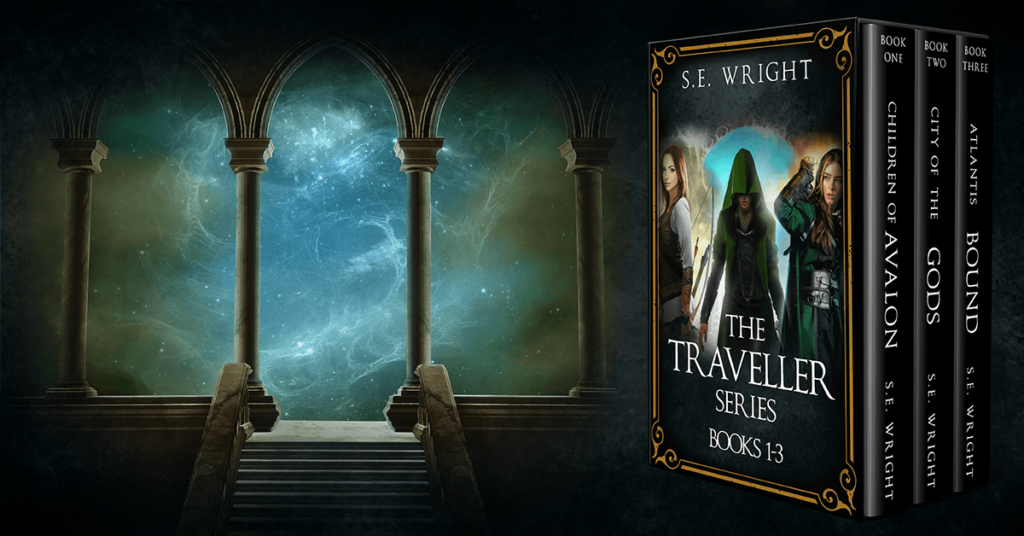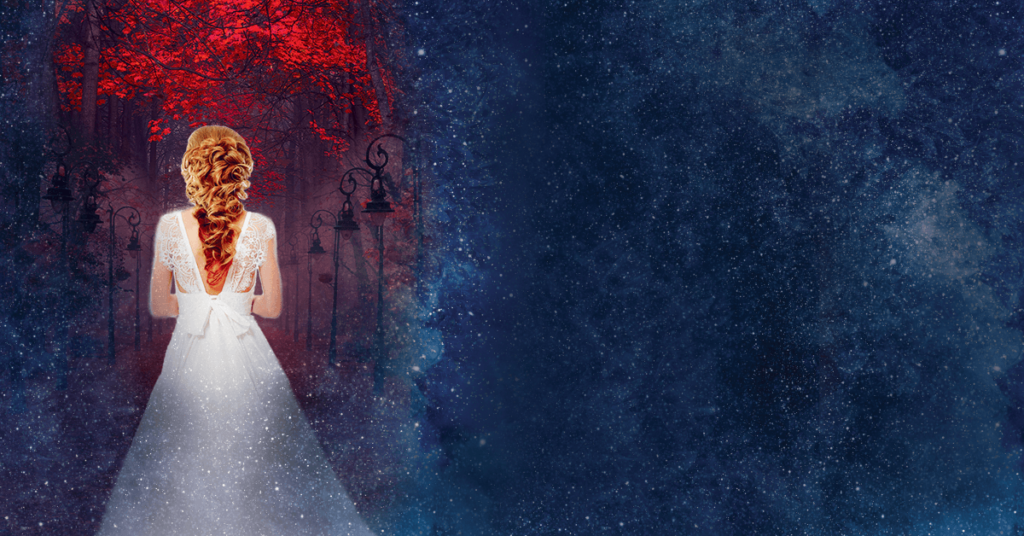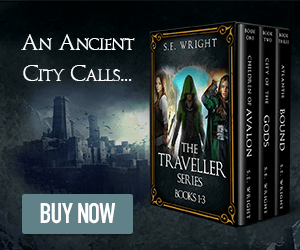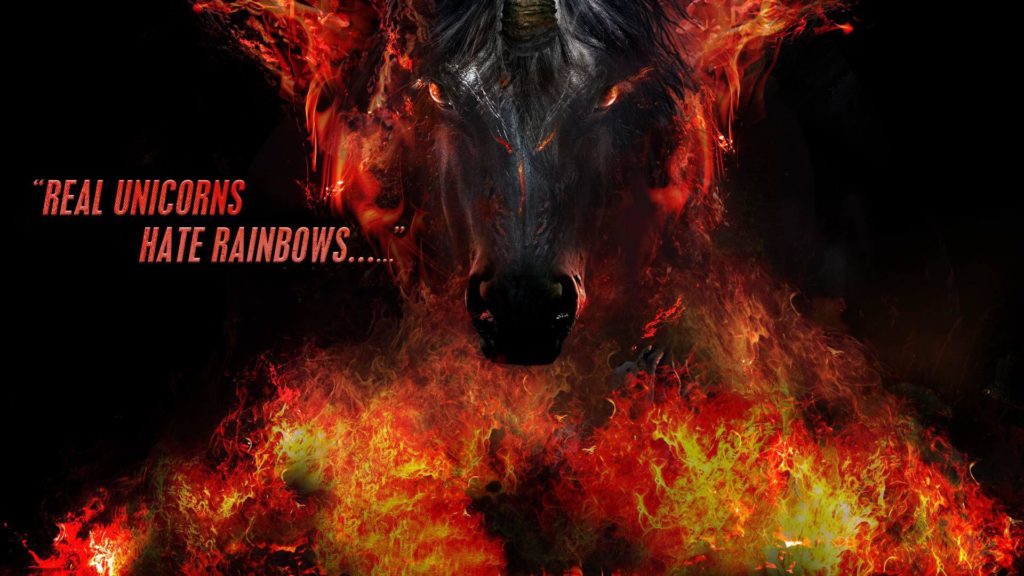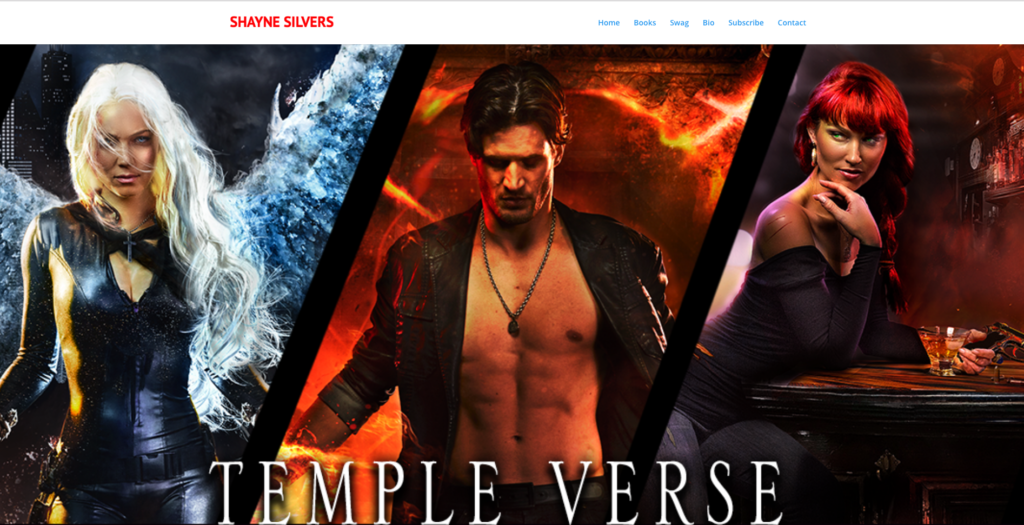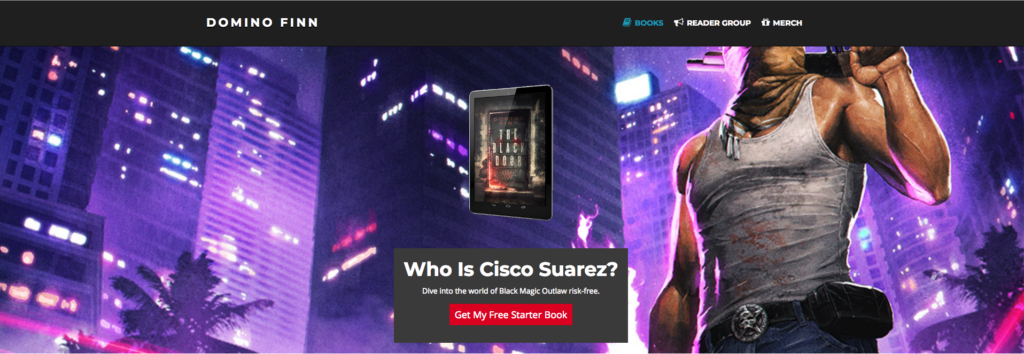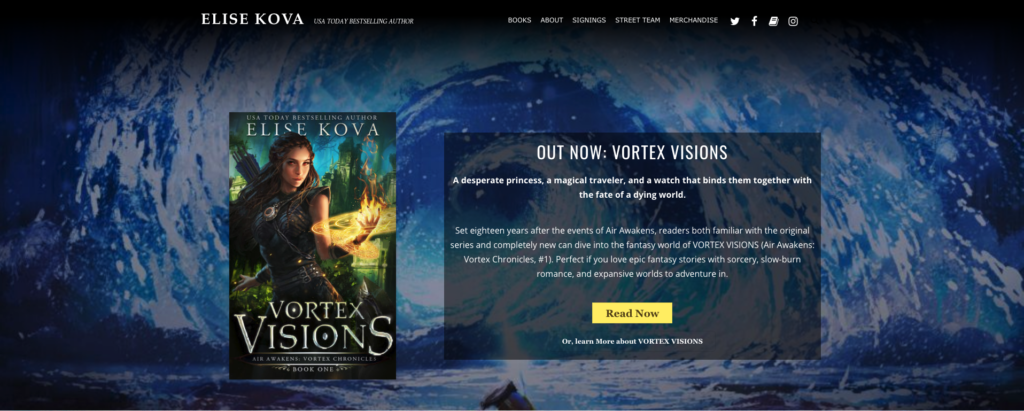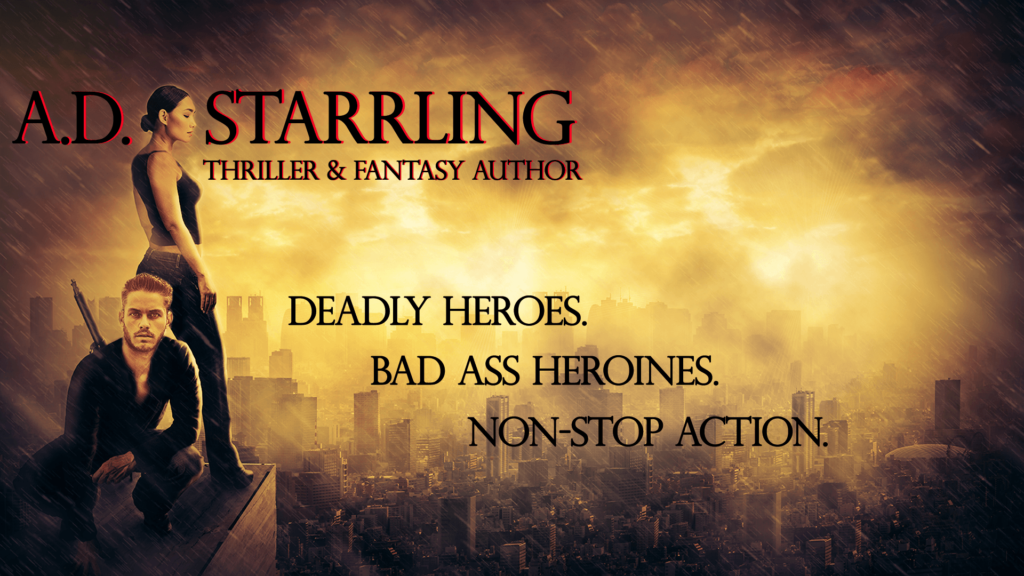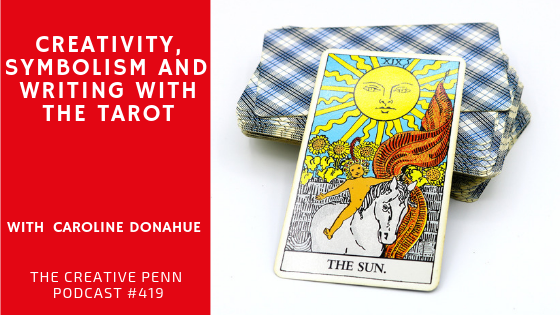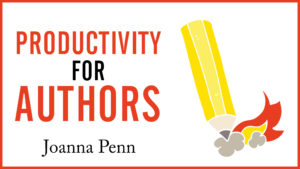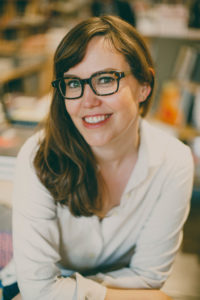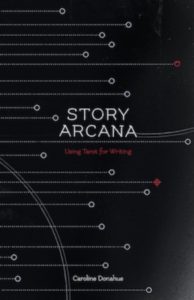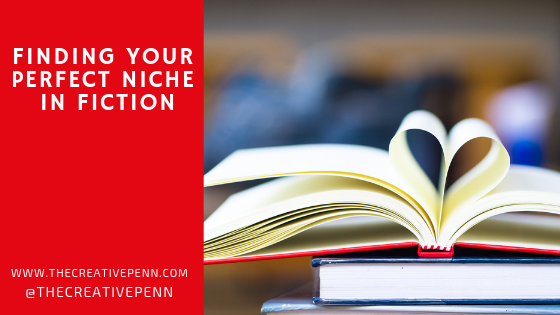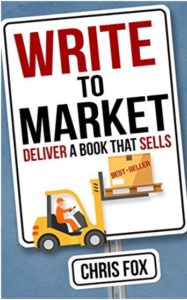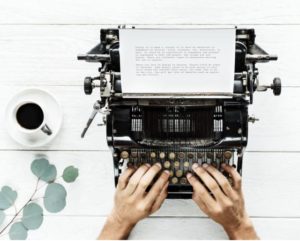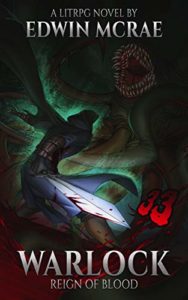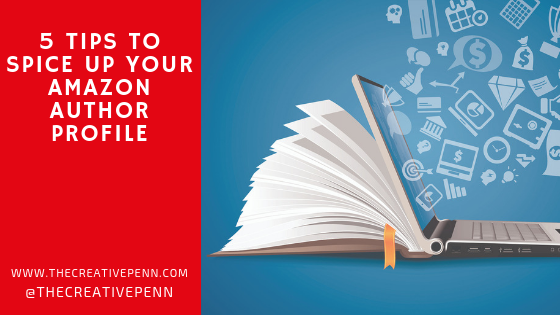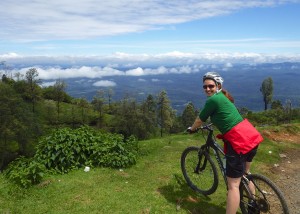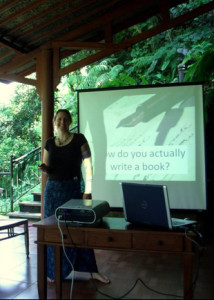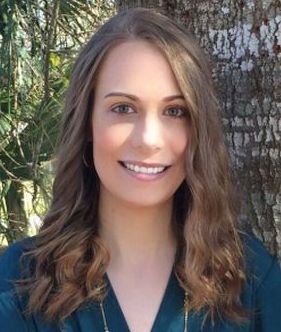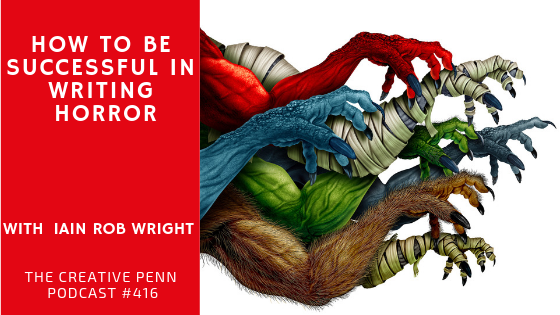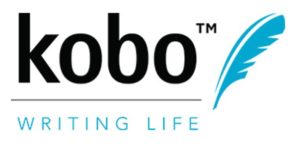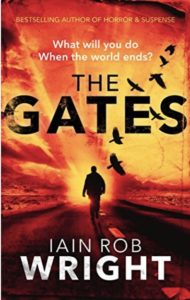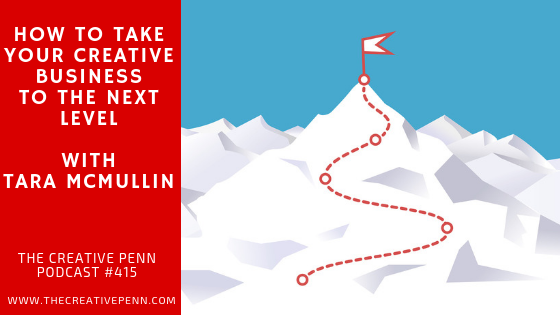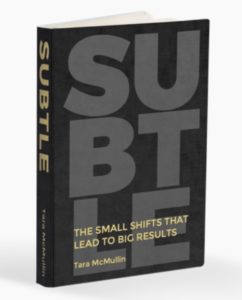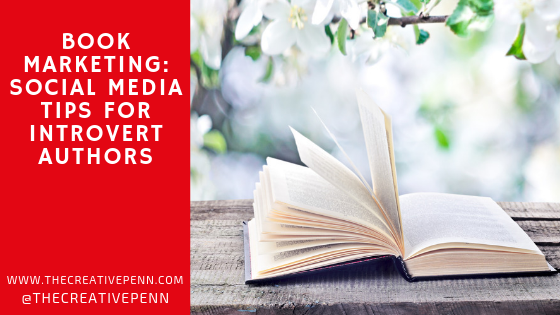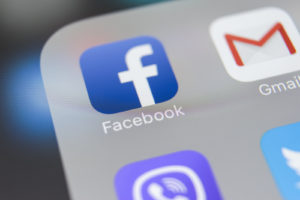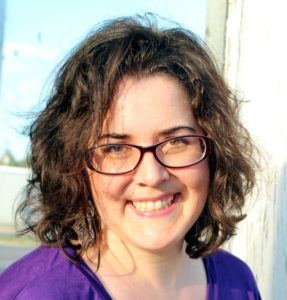Audiobooks are the fastest growing segment in publishing, and in a world where voice-first technologies are continuing to grow, it’s a great time to take more control over your audiobook rights as discussed in today’s interview with Will Dages from Findaway Voices.
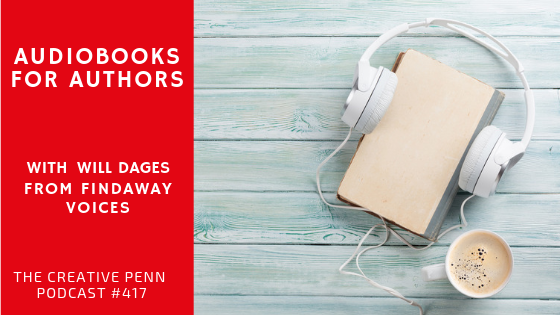 In the intro, I mention Amazon buying adaption rights to its own books, a first step to keeping all intellectual property in-house [The Verge]; plus, the OpenAI text generator that is so good, it can’t be released for fear of it being used for malicious purposes [Open AI blog; Wired], and why you need time for cashflow and asset creation activities if you want a long-term sustainable author business.
In the intro, I mention Amazon buying adaption rights to its own books, a first step to keeping all intellectual property in-house [The Verge]; plus, the OpenAI text generator that is so good, it can’t be released for fear of it being used for malicious purposes [Open AI blog; Wired], and why you need time for cashflow and asset creation activities if you want a long-term sustainable author business.
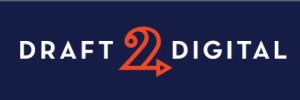
Today’s show is sponsored by Draft2Digital, where you can get free ebook formatting, free distribution to multiple stores, and a host of other benefits. Get your free Author Marketing Guide at www.draft2digital.com/penn
 Will Dages is Head of Product for Findaway Voices and an avid audiobook listener. He’s been immersed in the audiobook industry for seven years and working on everything from technology to marketing, to product development.
Will Dages is Head of Product for Findaway Voices and an avid audiobook listener. He’s been immersed in the audiobook industry for seven years and working on everything from technology to marketing, to product development.
You can listen above or on iTunes or your favorite podcast app or watch the video here, read the notes and links below. Here are the highlights and full transcript below.
Show Notes
- A big picture overview of the players in the audiobook market in the US and the world
- New developments in the library market for audiobooks
- On the ways voice technology can increase the ease of audiobook purchase for readers
 Pricing and promotion control for your audiobooks with Findaway Voices
Pricing and promotion control for your audiobooks with Findaway Voices
- What it costs for an author to produce an audiobook
- On the new Voices Share program which supports authors to get into the audiobook market
- Tips for marketing and selling audiobooks
You can find Will Dages at FindawayVoices.com and on Twitter @willdages
Transcript of Interview with Will Dages
Joanna: Hi, everyone. I’m Joanna Penn from thecreativepenn.com. And today, I’m here with Will Dages. Hi, Will.
Will: Hello.
Joanna: It’s good to have you on the show. Just a little introduction.
Will is Head of Product for Findaway Voices and an avid audiobook listener. He’s been immersed in the audiobook industry for seven years and working on everything from technology to marketing, to product development.
Will, tell us a bit more about you and how you got into audiobooks stuff and why you love audio so much?
Will: Great question. When I a kid in middle school I loved reading, and I was reading 20 novels a year. Just couldn’t get enough. And then at some point in school, I had to start reading books that I didn’t want to read, and that just killed the love of reading for me.
So I became a non-reader for many years until, I still remember this, the day I graduated from college. I was, like, ‘Ah, I finally have the time to read what I want to read.’ And I picked it back up, and it was like the floodgates opened, and years of pent up reading energy flowed out.
Audiobooks are the way that today I can still read as many books as I want. I read 50, 60 audiobooks a year now… listen to them. And so audiobooks are the way that I can fill up my commute with that and get as much as I wanna listen to.
Joanna: Why did you go into it as a career?
Will: Well, actually I found my way to Findaway through means of development. So I went to school for video production, actually, and I did some voiceover work back then. And I kinda got bored with it at the end of college, and instead of switching majors, I said, ‘Okay, I’m just going to finish the degree, and I’m going to teach myself what I really want to do, which was programming.’
I built a couple iOS apps and played around there. And then I started building websites. I love that. And then I ended up getting into Findaway as a UX developer and helping them build websites, basically.
I did that for a couple of years, and then I moved into some more experimental roles. And I helped launch a product called Dualbook, which is one app that lets you read and listen at the same time, and syncs the audiobook and the ebook together. And then if you want to switch formats, it’s always in the right spot.
From there, I had so much fun with that launching the new products, getting customer’s feedback, and iterating on it. That when FindawayVoices came around, as the newest product from Findaway, I raised my hand. I said me, ‘Oh, oh me. I wanna be a part of this. This sounds like fun.’ And here I am.
Joanna: I love your enthusiasm. I do want us to tackle the read / listen word. To me, it’s a brain, and how information gets into the brain doesn’t really matter. But how do you address this: I’m reading a book through audio, or I’m listening to a book?
Some people say, ‘Oh, well it’s not really reading.’
Will: Personally, I think that’s ridiculous. And it’s up to personal preference. No one should tell you how you want to read or listen. If you get the most out of the audiobooks, or even not maybe the full potential, right, some science comes out and they say, ‘Oh, you only absorb 90% of the information that you would have if you read.’ Who cares, you still got the 90%.
So to me, I could never read 60 books a year if audiobooks weren’t part of my life. And so that whole debate of, ‘Is listening really reading,’ it’s a nothing question for me because it’s all about personal preference. I get enough out of it that I don’t really care what the general consensus is, to be quite honest.
Joanna: I think it’s a misinformation campaign by people who are invested in print publishing. That’s what I think it is.
Will: That could be.
Joanna: It’s a bit like how romance reading has been treated by some people in the past, like, ‘Oh, you know, you have to hide it,’ or whatever. But no, I think in this community, we say ‘Read however you like. We love you. We love you reading.’ But you and I met at NINC and we geeked out on audio stuff, which is why I’m talking to you now.
Although I talk about it a lot on this show, I think it’s worth talking about: the current state of the market. Because, again, I talk to many Americans, and they might only know Audible, for example.
Can you give us a state of play in the audiobook market right now, and the big players in America, but also in the rest of the world?
Will: It’s good. For a lot of people, Audible is synonymous with audiobook. You’ll even hear some people say, ‘Oh, I got an Audible’ like, oh, actually, that’s not called an audiobook.
Audible is a huge player in the industry, and they’ve paved the way for making audiobooks as popular as they are. So everybody owes a ton of credit to Audible for making the audiobook industry what it is, especially in the U.S.
In Audible, the way you buy an audiobook is generally you pay 15 bucks a month, and you get a token, and you get to exchange that token for any book that you want in the catalog. Or you can just buy it out right.
But the vast majority of purchases are happening based on this credit subscription model. Where you get a credit, you’re subscribing you get one every month, and then you choose whatever audiobooks you want.
There’s actually a lot of other ways to buy audiobooks, so Google, Apple, Kobo, NOOK, they all do the a la carte. This is where I pay a bit of money, and I have a license to that audiobook. I’ve just paid outright for it, and now it’s in my library forever.
There’s also unlimited subscription partners. Think of this is like a Netflix model where maybe you’re paying 10, 15 bucks a month, and you get access to listening to as much as you want or listening and reading.
This is Scribd, Playster, hibooks services like that where you get access to the entire catalog, and it might be a more limited catalog. You might not get the top tier audiobooks, and you might not find every single audiobook you want there. But it’s unlimited listening, for lack of a better term.
And then there’s also libraries. Libraries are big in the audiobook space. We have 12 library partners that we distribute to right now. And libraries buy books in two ways.
One, the librarian curates the catalog, they buy it once, and then just like a physical item that sits on the shelf, one person is allowed to check it out at a time, and they’re allowed to go patron to patron to patron and basically circulate it forever.
The other way is actually a more innovative way, we’ll talk about this more, I bet, which is kind of the Netflix model in a library. We call this cost per checkout model. Where the library patrons have access to every book in the catalog, it’s not curated by the librarian, instead, it’s merchandised by the librarian.
So the patron can find any book they want. And every time they download it or check it out, then the author gets paid a small fee, not super small, a buck or two as opposed to maybe your library list prices, $15, $30, something like that.
That’s really opening up the library market to some really fun things for authors to do direct patron marketing and saying, ‘Hey, go check out my audiobook at the library.’ It’s free to the customer, which is a really easy thing to market to them, and you get paid every time they listen.
So there’s a lot of different ways to buy audiobooks right now. And there’s even more experimentation happening with some other, I don’t wanna say smaller models, but some other models that have yet to be proven.
Joanna: Also we were talking about Storytel, and probably even Google Play would be the bigger players outside of the dominant Audible space.
Could you just maybe comment on those companies as well?
Will: If you’re in the US, you know Audible, but it’s actually surprising how few countries Audible operates in.
Storytel, who you mentioned, has done some really smart things. They are finding that the countries that Audible is not in, and they’re going after those countries really aggressively, and they’re starting new markets for books that have never really existed before.
If you think of a country that has primarily consumed books with paperbacks and hardcovers, and now they’re moving to digital for the first time, it’s much easier to say, ‘Use the phone you already have, than go buy this e-reader tablet.’
When people are consuming a book on their phone, are they going to want to listen, are they going to want to read an ebook on their phone. And that’s why obviously, the answer is audiobooks if you ask me. It’s a much better experience to listen than to read on a phone.
And so they’re really establishing these audio first digital book markets, and they’re doing it really aggressively and having really strong performance.
Storytel is really the big one internationally, and we just launched with them. We’re really excited to get authors audiobooks on Storytel and see how that goes. Because they’re just expanding into tons of countries, and they’re doing some really cool stuff.
Joanna: That’s the primary reason I was, like, ‘I’m coming with you guys because you’re doing this partnership.’
But also there’s been a lot coming out of CES, in the last few weeks, about Google Assistant being in so many things. And, of course, they’ve said it’s on something like nine… I wanna say billion devices because of the phones. You distribute to Google Play as well. It’s, like, ‘Hey, Google, play me an audiobook, and it will default to a Google Play.
Do you think Google Play audiobooks will become a bigger force internationally because of the assistant model?
Will: I think there’s a ton of potential there because of that. It’s amazing that you can buy an audiobook through Google. You say, ‘Hey, Google, buy my book.’ ‘Hey, Google, buy How to Write Non-fiction by Joanna Penn.’
Every time you walk into someone’s house, you should just say that outloud and wonder if they have a Google device. Because boom, there’s a sale, right? So the ease of that transaction is gonna be really, really powerful.
Even the way Audible works is you get your credit, you have to go to the website, you have to redeem it on the website, then you go back to the app.
There’s a lot of friction there as opposed to just on Apple and Google. You just click a button, you pay, it’s done. It’s in your library.
Using your voice is even easier and more impulsive. And I think that that’s going to lead to a lot of potential for lowering the friction on sales, and then as a result, increasing sales dramatically.
Joanna: So exciting. We’re gonna circle back to kind of feature stuff.
I wanted to talk about Findaway Voices, again, because you get me at your tagline, which is, ‘Take back your freedom.’ And, I mean, freedom is my number one value.
Freedom is why I’m an author-entrepreneur. It’s why I do what I do. I love your tagline.
Tell us why use that tagline, and how can people think about freedom in terms of audiobooks? And how is it different to using a service like ACX?
Will: I’m glad you love the tagline. We love it, too. It’s all about giving control to the author.
The most obvious one that everybody thinks of first is this price control thing. When you submit an audiobook to ACX, you don’t get to set what your list price is. They determine what the price should be. They determine what they’re gonna sell it for.
If Audible wants to discount the book to whatever they do it, they don’t ask anybody. And that’s different in Findaway Voices.
We’re the wide distribution option. We’re the place you go if you want your audiobook in every audiobook retailer in the world, including Audible, right? I don’t want to discount that. We do send to Audible.
Now, when you distribute through us, you get to set two prices, two list prices. You get to set your retail list price and your library list price. And with every retailer that we send to, except for Audible, those list prices are how your royalties are paid.
So if we say you’re getting a 45% royalty, it’s off the list price that you set. Doesn’t matter what the retailer wants to sell it for, they could sell it higher, or lower. If you set it as $15, you’re making 45% of that $15.
Beyond pricing, there’s also promotion control. We’re offering the ability to have the little slash due to price and say, ‘You know, it was $15, now it’s 12, or now it’s 10.’
That kind of pricing control has not really existed in audiobooks before. The audiobook market is very young when it comes to promotion pricing, and it’s not as easy to get the promotion. So we’re exposing that to authors.
We’re also doing things like letting you really have fine control over your metadata, your release schedule. If you want a future date, a release date, and say, ‘Well, this is going to go live in six weeks.’
You can submit it now with a future date, a release date, and it won’t be live on most retailers. Some retailers ignore it. But most retailers do respect that release date, and they’ll hold it, embargo it until that date.
We’re pushing on vendors for more pre-order support, more price control, more fine-grained price control. A lot of the promotion windows are 30 days at a time.
So you set your promotion price for the entirety of June, and not June 1st, to June 3rd, or something like that. So we’re pushing for more control and giving these levers to authors.
We don’t have the perfect formula for how to maximize the sales yet. But we’re giving everybody the control and the freedom to experiment. And we know that people will figure it out, and figure out how to maximize that. And once there is a standard formula, we’ll pass it on to everybody.
That first round of authors will be on to the next year. There’s a lot of money to be had for whoever figures out how to pull these levers in the right way first.
Joanna: I’m going to come back to discoverability.
Some people might think, ‘Oh, do I have to be all in with you, and I can’t do anything else, or how can you combine both of these? Or what are the options there?’
If an author is already on ACX, and they want to use Findaway, how can they do that?
Will: Great question. And another reason to plug freedom, because there’s another place where we get more control, which is awesome.
There are two scenarios that you can be in if you’re with Audible right now. One, you can be on Audible exclusively. When you go to Audible, you have two choices, you can go exclusive with Audible, and make a 40% royalty, or you can go non-exclusive with Audible, and you can make a 25% royalty. So that 15% split for such a huge player in the market is a big deal to a lot of people.
And so a lot of people have chosen exclusivity probably before we existed and they didn’t know about us. I totally understand.
If you are exclusive with Audible, it’s a seven-year contract, and that means you cannot use us. So if your book is exclusive with Audible, you cannot use Findaway Voices for that title. It’s title by title.
Joanna: I would say, if you have been in that exclusivity for one year, you can request to move to a non-exclusive. So I’ve now requested three of my books will come out this year, and I’ll be able to take them wide. So if you’ve done one year of your seven years, you can get out.
Will: That’s right. There is a loophole, but that only works if you didn’t do the royalty share, right?
Joanna: Yes, exactly.
Will: So now we’re getting really deep in here. But there’s another option where you can pay nothing up front for your audiobook production and split the royalties with your narrator for seven years. In that case, the narrator took no payment up front, and they’re relying on those seven years of royalties to make up that difference.
And so it’s not fair to get out of exclusivity, lower the rate on the narrator, so you do have to fill out the full seven years in the royalty share instance.
But yes, if you did not do royalty share, if you paid for the production after one year, you can request to go non-exclusive, and then you can bring the audiobook to us.
So once you are non-exclusive, you can go to Findaway Voices, upload your audiobooks, and you’ll see a page with a huge amount of logos. And this is all the places that we’re going to send your audiobook. And if you drill it down, you can see a checkbox list. And you can check or uncheck any partner in that list.
So if you want to continue going direct to ACX, you can just uncheck that one. Maybe you don’t like our business model, right? Maybe you are philosophically opposed to libraries. I think you’re missing out on a lot of money there, but there’s some people who really don’t want their book in libraries.
It’s totally fine to uncheck all the library partners, and just keep the retail ones. And just we will only send your book to the options that you check.
Findaway Voices is not an all or nothing option; we give you fine-grained control as far as where your audiobook is sold as well.
Joanna: I really like that. The last couple of years I’ve just paid narrators outright. So I own all the rights and I’ve gone non-exclusive, so I’ve put those books on as you know. I’m waiting for some of them to hit the one year mark, for the ones I’d already paid, but are in exclusive.
And then I’ve got a lot that are royalty splits, so those ones I’ll just have to wait. But we’re in this for the long gain, so as far as I’m concerned, I’m waiting. And I’ve got all the dates, and I would just sort it out once we get there.
I also wanted to ask you about selling direct. I’ve sold direct audio for nearly 10 years. I’ve just done downloadable mp3s that people can buy and listen to. But, I don’t even think people know half the time how to download an mp3 and get it on their phone. They might not use Dropbox or another app to sync. So you have to help them and it’s all technical, and it’s a right pain in the neck.
How do we sell direct audio with Findaway?
Will: We’re trying to tackle this problem as well. We launched a platform last year that’s still in beta right now, as of the recording, and it’s called Authors Direct. This is a way for authors to sell their audiobooks directly to consumers. And we help with a couple things.
One, we help with the listening experience making sure that the listener’s experience is up to par with what they’re expecting from a world-class audiobook player.
So it’s not just open the mp3 on your phone, and you get the play bar that’s great for music controls, or short audiobooks. But as soon as you’re getting into the two, three-hour range, and maybe it’s split into four or five commutes.
And you have to use the scrubber bar to find out where you were, and remember the time code, and, ‘Oh I want to go back 15 seconds to hear that again.’ There are no controls for that or the sleep timer has no speed control. All these things that people expect from a good audiobook player are just not there.
So we’ve built a fantastic listening app, this is what I use quite a bit, is Authors Direct, and we have an internal one for testing that we use. It’s a great playback experience. So when you sell the audiobook, you know your listener will have a good experience.
The other thing that we help out with from the author’s perspective is taxes. Selling audiobooks is not easy to do from a tax perspective. We are the merchant of record for all the transactions, not the author, and so we will take care of all the tax reporting and the payment fee transactions.
Because processing a credit card is not free to the retailer. So we take care of that, and we also take care of customer service. So like you said, it can be a pain in the neck.
When you’re sending an mp3 to somebody, you probably send them a PDF or some instructions, and they may or may not read it. And they’re gonna reach out to you and say, ‘Hey, I paid 10 bucks for this audiobook. I can’t play it. You gotta help me.’ Findaway takes care of all of that as well through the Authors Direct platform.
Now, when your book is for sale in Authors Direct, we’re like a retailer in that we’re taking care of these things. But we’re not like a retailer at all, in that we’re not promoting the audiobook. We’re not driving traffic.
There’s no discoverability on Authors Direct, that’s the author’s job. So the author is responsible for driving all of their traffic to the website to purchase. And then they get the great listening experience. They get customer support. They get everything.
In exchange for that, the author makes 85% royalties. So that is a massive increase over the next highest retailer in the market, which is 50%.
Now Findaway Voices takes 20% of the 85%. So it ends up being about 70% royalties take home for the author. So when you’re buying ad dollars, you’re pushing people to this site, you know you’re making 70 cents on the dollar when it’s all said and done. And that’s a much better ROI than on any other retailer.
We’re hoping to help make the direct sales experience a lot better for authors, and try to get a lot of the experimentation that we want from vendors, this fine-grained, I want three days of price promotion here. All of that stuff.
We’re using Authors Direct as our testbed for that, and to show other retailers and vendors what can be done when authors have that much control. So it’s a limited beta. We’re testing it with 15, 20, we might be up to 30 people now, and we’re going to keep opening up that wider and wider. And we plan on opening it up for every Findaway Voices customer at some point.
Joanna: When you say, ‘At some point,’ are we talking 2019 or 2020?
Will: I think it’s going to happen in 2019. We’re still working out some bugs. We’re still figuring out how to most efficiently manage the customer service. We’ve seen the transaction scale like crazy, and we want to make sure that we don’t overload our team so that we can continue to give the best listener experience to the customers.
Because if it fails, we don’t want to be the reason. We don’t want the listening experience, that thing that we’re taking our cut to be the reason it fails. So we want to make sure that we do it right, and we’re working out all the bugs still.
Joanna: Having worked in software as well, I know bugs happen. But as you said, this is a younger industry, and so this is what BookFunnel has enabled people to do with eBooks, and providing this separate. So that’s fantastic.
Let’s just talk about cost to produce. You’ve talked a bit about pricing. One of the big barriers to entry for authors is the price of creating an audiobook. And I found myself, I have an audio platform for nonfiction with this podcast, so I sell a lot of nonfiction, and I make good money on my nonfiction.
With my fiction, takes longer to pay back the investment. Which is why I’m starting another podcast, so I can maybe try and speed up that process from audio to audiobook.
If you’re on your phone and you like someone on a podcast, you might be more likely to click a button to check out their audiobook. So that’s my kind of sneaky marketing for fiction audio.
Tell us a bit about cost to produce versus profits and timelines that it might take.
Will: Sure. So the cost to produce an audiobook is generally based on the per finished hour rate. So the longer the audiobook and the better the narrator, the more expensive it’s going to be.
We see most audiobooks in the $1,500 range, so this is for like a six to eight-hour audiobook, at maybe 150, 200 bucks per finished hour. So you’re laying out that 1,500 bucks, call it, or 2000 for a round number. 2000 bucks at the start of it, and you want to make back, and we want you to make that back.
I’m going to take a quick tangent here.
The way Findaway Voices makes money is that 20% fee on the distribution. So when you make money, we make money. You keep 80%, we keep 20%. So our incentives are aligned.
We want you to sell books as much as everybody else. We want you to recoup so that you make more books and have more and more to sell. As far as, like, how soon you make it back, that is varied wildly based on a lot of factors, like the quality of the audiobook, the amount of effort you’re willing to put into marketing it.
I don’t know what episode this is of ‘The Creative Penn,’ but you have put a massive amount of time and effort into building this platform. And all of that investment pays off when you release another nonfiction audiobook. And you’re going to make those back a lot faster than somebody else who hasn’t put in that amount of time, right?
The caveat being if you get an Audible feature, or if you get on the AppleCare sale that can all change overnight. All your dreams are coming true then. But you can’t rely on that. Good business people don’t rely on that luck to happen, they work for it. And going wide requires a lot of work in marketing.
So to address the point that you said about cost being the biggest barrier of entry for somebody trying to make an audiobook, or wanting to make an audiobook, totally agree. We’ve heard that feedback a lot.
We’re launching a new program this year called Voices Share. And you can think of this as a kind of hybrid royalty share program. Think of it as a half price audiobook. You’re going to pay half the price up front. That means the narrator gets some bulk payment up front, probably half their rate, and then they’re going to take a smaller than 50% cut of your royalties ongoing.
So they have ongoing upside for many years afterwards. They’re still able to pay the bills. They don’t have to just take a complete risk on something.
We’re launching that this year to help lower the cost of audiobooks and help get more and more authors able to produce.
Joanna: I really like that, because I think that’s always much fairer because I feel like some of the lovely narrators who’ve done royalty splits at the beginning there was a rush into that with ACX. And then a lot of them I don’t think made enough money.
So a lot of Indies are finding it harder to work with narrators for royalty share deals because you kind of have to already prove sales. So this would be kind of halfway there. That’s really interesting.
And, of course, Findaway Voices helps authors find a narrator doesn’t it, as well? Just like ACX, you can find narrators with you guys.
Will: I’d like to think it’s far easier than ACX, so the fundamental difference on the production side between us and ACX.
ACX is an open marketplace. This is like you’re searching for a hotel on Airbnb, and you’re going through all the filters and you’re looking through the maps and trying to find the perfect one.
Where Findaway Voices is like Stitch Fix.
Joanna: I don’t know what Stitch Fix is.
Will: Stitch Fix is a company that learns all about you and they assign you a personal stylist, and then it’s one of those monthly boxes, right? So the box shows up, and here’s the perfect set of clothes for you, or the perfect outfit tailored to you from a stylist.
They do all the curation work for you. And that’s what we do. So we curate these selections.
When an audiobook project comes in, we ask a whole bunch of questions like a big dating profile. We’ll try to learn as much as we can about the type of the audiobook, what you’re imagining the field being, is there a sound-alike with a celebrity. We ask 20 questions about the audiobook. And then it goes to a human casting team.
We have a fantastic casting team that onboards all of our narrators. So they’re really intimately familiar with what all of our narrators can do. We’re up to 1,500 or so now that are fully on-boarded.
And then we present you with 5 to 10 top choices. So we zoom you right to the semifinal round. And now instead of listening to 80,000 samples, and dealing with sliders for many hours, you’re just listening to samples from five, 10 narrators.
That narrows the field quite a bit. It uses our expertise in what we think would be a great narrator for your project to help leverage that expertise for first-timers who have no idea what to listen to sometimes.
We have a lot of people come to Findaway Voices and say, ‘I’ve never heard an audiobook. How can I be expected to produce a good one?’ We say, ‘Oh, that’s what we’re here for. We can help with that.’
We love audiobooks. So the casting process really zooms you to the semifinal round, and from there we do free auditions for any of the narrator’s in that list that you want. And you get to hear your words in their voice. And then you get to hear your top two, top three, or as many as you want, head to head before you make the decision who to us.
So we hope that you feel really comfortable and excited about the narrator by the time you’re ready to the lay down on that commitment for the $1,500, $2,000 because that is a lot of money. And we want to make sure everybody feels really excited about it.
Joanna: We do have to address the elephant in the room, which is yes, you can create a fantastic audiobook, but how do you actually make some money? How do you sell it?
One of the things that is basic around eBooks and print is the metadata, and I know you do give controller metadata. But for example, there’s still only one category. There are no keywords as such.
There’s no BookBub for audiobooks. Although getting a BookBub does actually drive audiobook sales, obviously.
Talk a bit about tips for marketing audiobooks, and what some of the bestselling audiobook authors are doing.
Will: Sure. The first tip is going to be the most basic obvious one ever, which is the cover art. The cover art matters so much for the marketability of the book.
And with audiobooks, covers are square. Covers are square because back in the day, audiobooks were sold on CDs, and CD cases were square and that has carried through.
And so if you bring your ebook cover, which is decidedly not square, it’s usually four by three. And you just slap it in the square container and have it letterboxed on the side, it doesn’t look good.
I can tell you all of our bestselling titles on Findaway Voices have great looking square formatted cover art. So it’s worth the investment to make sure that you have a high-quality cover art because it matters a lot.
The other thing I want to bring up, you did mention quickly BookBub, and how BookBub and Written Word Media, FreeBooksy, Bargain Booksy, those things all have dedicated audio offerings, but they do matter to audiobooks. Because anytime you get a BookBub for your ebook, that visibility is going to spike your audiobook sales as well.
Personally, I subscribed to BookBub and I get a deal every day, and if there’s something I want, I’ll see it on there, and I’ll go look for it on audio.
And that’s another reason it leads nicely to another tip, which is simultaneous release. I think one of the best things you can do for your audiobook marketing is try to hit a simultaneous release.
So the same day that your paperback or print on demand, your ebook is released that your audiobook is also available. Because that’s the one day, the launch day, you’ve been doing all these plans, you’ve got all this marketing ready to go.
Launch day is the day where you’re going to have the most attention, the most eyeballs, the most ads running, the most relevant conversation happening. And people will see your book, and they will go look for it on audio. And if it’s not there, they’re probably just going to forget about it.
There are some ways to do really effective staggered launches, where you have the ebook, today, the audiobook after a month, and then maybe book two of the series after that, and book two of the audiobook after that if you leverage a lot of touch points with your audience.
If you don’t have enough to say on Facebook, maybe having a separate launch to just announce some more good news is a good thing. But when audio is thought of as an afterthought, all the book launch marketing goes into this one moment. And then the audiobook comes out and your ad’s out there, but you don’t really do as much for it. That’s what really hurts your audiobook sales more than anything.
So we see the way around that is simultaneous release, is making sure it’s part of the release strategy, the bigger strategy when the most buzz is hitting. Simultaneous release is really the biggest thing you can do to boost your audiobook sales right at the beginning.
Joanna: Really good point. And I know I have not done this yet because most Indies will finish the ebook, get it edited, but then they’ll upload it. And we’re so used to things being available fast.
Whereas the process is very easy at Findaway and ACX is very easy. But then it takes couple of weeks, and you don’t really know exactly when it’s going to come out, like, it’s very odd. Plus if you hired a narrator, then you have to wait till the book is finished.
So I get what you’re saying, and the challenge I think, challenging everyone listening and myself, is to start thinking more like a traditional publisher. Well, I say that a lot of them are not simultaneous release.
Will: In this way, a lot are.
Joanna: Don’t rush things out, wait until all the formats are together. The other thing I see now a lot in the UK, I’m sure it’s in America, too, is the audio first or the Audible audio exclusive.
You’re actually saying, ‘Look, you can actually get it on audio before you get it on ebook and print.’ Is that something you’re seeing?
Will: I haven’t seen as much experimentation with that as I would like to, because I think it’s a really compelling offering. The downside of simultaneous release is my ebook is ready. It could be selling today, but I’m holding on to it, and that hurts and I get it. I totally get it.
But we’re seeing a couple authors experiment with shorter books or interludes. Maybe you have a five book series and they’re going to start releasing little stories that happen in between the books and the series. And maybe these are just 30 minutes or an hour, and they’ll do those audio only.
And they’ll see, ‘Okay, well, I have a really strong ebook readership, can I convert them to audio, when audio is the only way they can hear more about this character I know they love.’ And they’re using that to test conversion rates between formats.
But as far as a big release going audio first, I haven’t seen it as much of that as I want to. If you, dear listener, are interested in experimenting with it, reach out. We’d love to help you plan that and help you really get a success story there. Because I love to have more examples of where that’s working really well.
I just want to go back a little bit because you mentioned the timeline, and that is kind of important when you’re thinking about simultaneous release.
The average audiobook production from start to finish can be four to six weeks. That’s a lot of time. And then when you hit the distribute button, it can be another 10 to 14 days before it’s actually live on distributors. So keep that timeline in mind.
It isn’t like the ebook world where you hit submit, and then you refresh the page on the retailer, boom, it’s there. The audiobook market does move a lot slower.
Part of that is we have gigabytes and gigabytes of files to move across a whole bunch of different places. And the audiobook market and retailers just aren’t as fast, for lack of a better term, as the ebook market is.
Joanna: I get that. And then what about that metadata issue, because it frustrates me. And I also find the Audible store is terrible.
And in fact, I normally, if I buy an audiobook, I’ll go to say, amazon.co.uk, find the ebook or the print book, and then look for the audio version, rather than going on to Audible.
And the category thing annoys me because I write across genre, as do many people listening, and I don’t like just having one category.
I want more categories. I want keywords. I want more metadata. Do you think that’s a possibility in the future?
Will: I think it is. We’re pushing a lot of retailers to get better and better with that, as well as first in category. Let’s have some rankings here. Let’s have some things that you can show off when you hit a top 10 list.
I don’t know of any audiobook retailer today that has those kind of rankings and lists, or deep support for really customizable categories. A lot of it is just based on BISAC code. So we send off the BISAC codes. You can do I think three to five, I forget exactly how many. You can definitely do three maybe five BISAC codes that we send along to the retailers.
And then they use those to categorize as they will. We don’t have a lot of fine-grained control yet for category support. But I love the idea, we’re always pushing more ideas to retailers, and I would love to see better support with that in 2019.
Joanna: We’re getting into the kind of feature thing, but audio SEO is something I’m thinking a lot about. And there is, as far as I know, obviously, Google is doing a lot of it. The Voice Assistant stuff, they’re doing a lot of voice recognition.
Our audiobooks have text. They have text associated with them. They are a book. I always feel like we should be able to upload an ebook with the audiobook, and the metadata is the book. So that they actually can recognize a lot more with that. I want this for eBooks as well. There’s no reason why they can’t do this stuff.
But do you see what I mean? SEO around audiobooks.
If someone is talking to their Alexa or their Google Assistant, and they say, ‘Find me a werewolf romance set in London’, that would help find it, as opposed to just the very limited stuff we have now?
Will: That would be fantastic. Right now BISAC codes and description fields are probably the only thing that they’re indexing, if their doing both.
The description is, basically, if you’re going for SEO, make sure you’re writing a really good description. Look at what the big pubs are doing. They’re stuffing a lot of stuff in there. And look at some of the top sellers and see what they’re doing with their audiobook descriptions.
They’re limited to, I believe, 4,000 characters. I could be wrong on that specific metric. So you don’t have a ton of space to work with to do a lot of excerpts, or parts of the chapters, or something really relevant to pull out.
But definitely, if you get an award, or if there’s any news, like, the publishers are all putting that in there. Now, there’s a movie tie in, now there’s a new award, it’s up for an audio, it’s up for something.
You can update your description at any time with Findaway Voices and republish it. So that’s another piece of control that you can use to experiment and see if you want to try some SEO stuff in your description.
You can try something for a couple months, you can change it for a couple months, you can kind of do an A/B test over that period of time. Or you can make two versions of your audiobooks. And you could have one description in one version, and another description in version B. And you kind of send each version out to half the retailers.
I’m going to send this description to Apple, this description to Google, and see if there’s a noticeable difference in performance, and maybe swap it halfway through. All that control is available now. So the SEO stuff is great.
When somebody is searching for a book on your topic, the metadata is the product, right? They might listen to the sample or something, but it’s the metadata that’s going to draw them in from the search engine to the retailer. So it’s worth spending the time to make sure your description is really solid.
Joanna: Right. Oh, I could talk to you forever, you know that.
Let’s just come back on libraries, because I feel like libraries have been ignored a lot by Indies. You can get into libraries. You’ve been able to get into Free to Match Words into libraries for years. And, of course, OverDrive is owned by Rakuten, which also owns Kobo and Draft2Digital, obviously, do stuff into libraries. So there’s lots of ways into libraries, but what you talked about there with audio is really, really interesting.
But again, discoverability; I don’t have the bandwidth to try and hit up every library in America with a letter.
How do you market? Or do you just try and market to customers of libraries to go and request stuff?
Will: There’s two main ways that I will recommend doing it because there’s two ways that libraries buy audiobooks.
There’s the a la carte model where the librarian is curating a catalog, and they’re finding your book through some list or somewhere, or maybe you’ve done a letter to them. They’re choosing your book to have in their catalog. And generally speaking, they’ll pay two to three times what a customer would buy at retail to have that right to circulate it.
So you set your list price for retail at 10 bucks, you set it to 30 for libraries. Libraries are used to paying that for the right to circulate it. In that case, I like to recommend starting with local libraries, letting them know you’re a local author, and they will almost always buy local content.
Go to your branch library, go to your county library, go to your State Library. Think of what local means in your context.
A Seattle librarian may have a Pacific Northwest collection that includes somebody from Vancouver and includes somebody from Portland. No matter where you are in that range, Seattle might be local in the right context. So think broadly in terms of that, because librarians love featuring local content. So those are easy wins.
The more scalable broad approach of leveraging the cost per checkout model, where this is the Netflix model in libraries, where the whole catalog is open to patrons, and the librarians do more of a merchandising role than a curation role.
This opens up the possibility for direct patron marketing and starting to do ad campaigns, or outreaches to your mailing list that say, ‘My audiobook is available at your library.’ And when you use Findaway Voices, we’re distributing to 12, 13 libraries. You know it’s there. You don’t have to worry about which particular system their local library uses, you can say, ‘Just go check out my book at the library.’
And if they’re not on a cost per checkout model, they’ll request it from the librarian, which is a great call to action. Because the librarian, when they get a request, will probably buy it. Or they’ll start downloading it like crazy, it’s free to them, and you get a couple bucks every time they do it.
It doesn’t matter if they finished the book, in most cases, it just matters that they had the spark enough to download it or check it out. So that can be really powerful.
We’ve started to see some people really experiment with patron driven marketing campaigns, which, I mean, when you’re telling somebody, ‘Go listen to my book for free,’ it’s a really compelling offer. It’s about the most fun you can have with a marketing campaign is, ‘Go listen for free and I get paid.’
We’re seeing some authors with 20%, 30%, even 40% of their royalty checks come from library systems. So the ones that are working really hard at patron marketing are seeing it pay off in a big way.
Hoopla is another big one in the U.S. A lot of libraries use Hoopla. And we recently announced MNOL, which is a huge library system in Italy. They’re in, like, 70% of the libraries across both schools, universities, and public libraries in Italy. They’re desperate for more non-Italian content. So English language contents can work really well in those systems. And we’re just seeing this trend towards libraries being more and more impactful every day. And we’re really excited about it.
Joanna: Wow, well, in that case, call to action everyone, you can get Joanna Penn and JF Penn books in your library. So that’s awesome.
Will: If they’re not there, ask the librarian to buy them.
Joanna: There we go. Fantastic. I am excited about libraries. I think sometimes one of the issues of being an Indie, of course, is bandwidth with all the things that you want to do.
You and I met in September, and this is what? Four or five months later now when I’m, like, finally getting around, and I uploaded my books this week to Findaway.
I know everyone has their list. But libraries to me, like you say, can be win-win for the customer. Because audiobooks are more expensive than eBooks, even with a subscription they’re more expensive. So I think libraries are a really good idea.
We’re almost out of time, but I always have a future segment, and you and I were talking a bit about this. And I wanted to ask you about what you think is coming.
I want to say in the next two to five years, maybe longer horizon, what are you excited about? Like, I went on lyrebirds.ai the other day, and I built myself a voice synth which was just amazing. It wasn’t brilliant as in you could tell the difference. But it was still amazing that I could train an AI to speak like me already, and that they’ve done this for people.
I’m also thinking about the impact of 5G and what that means to that. And also Voice Search and Voice Assistant. So those are some of the things I’m interested in. Any comments on those or anything else that you’re excited about?
Will: I’m a huge geek, and I love this kind of stuff. So we have the next three, four hours to talk about?
Joanna: Yeah, totally.
Will: Voice synth is probably one of the most interesting things to me. The ability to have a computer replicate a human-sounding voice is going to have huge implications for a lot more than just audiobooks.
But certainly, audiobooks are gonna be a big benefactor of it as the market changes, though. I think in the meantime, that there is even some potential for a new market to expand or be created from a different tier of audiobooks, for lack of a better term. I don’t have the terminology right for this yet.
But the thought is that a human-narrated audiobook is an audiobook. And maybe there’s a computer narrated audiobook that’s marketed differently, it’s not pretending to be an audiobook, so maybe it’s half the price or quarter of the price.
And it’s setting the consumer expectations, right, that, ‘Okay, this isn’t a perfect performance, this is going to sound a little robotic in parts. But it’s good enough that for two bucks, I guess, I’ll pick it up.’ And those things are not locked in time like human narrated performance is.
A human-narrated performance, when you get it, if you find a typo, or want to change a bit of a story, it’s really expensive to go find that narrator again, sound out the words. You could make edits on the fly to your story, and have it automatically updated in the audio versions.
You could always have the most recent tech being delivering your audio versions. So as the computer voice gets better and better, your audiobook gets better and better as well. You can imagine a future like that it’s really compelling for the audiobook industry.
I don’t think human narrated performances will ever be completely extinct. Just like professional photographers are not completely extinct now, even though everybody has a great camera on their iPhone.
There’s a performance and an emotional connection with that, that I think will continue to persist for a very long time, if not forever.
Joanna: I guess my thought there is if I can synth my voice, and you have a connection with my voice brand, and I write the book, and I have my voice synth narrated, then where does that lie on that spectrum that you’re talking about?
And this is really interesting for intellectual property rights, for audit, because, at the moment, I think most people are signing away rights to audiobook rights. Maybe single voice or they might sign away performance or that type of thing.
Whereas what you’re saying is interesting because you need to further talk about your rights in terms of human narration versus AI narration, for example?
Will: What if it’s the listener’s choice who they want the narrator to be. The book is there and I say, ‘Well, this book over here, I love it. But I love Joanna Penn’s, voice. Oh, I can choose Joanna Penn’s voice. Her’s is up here. And I can listen to any book in the world narrated by Joanna Penn.’ And maybe you for offering your most vocal profile, you know, you get a little cut every time.
Joanna: I get a license, or I license my voice to a publisher. I love that. And also some people have a preference for male-female voices or an American voice, or British voice. So that could also be a parameter.
When is that coming 5 years, 10 years?
Will: Another one I wanted to point out was, I think just the traditional audiobook production process will be really improved by technology too. So right now, when a human… look at me, I’m so future I’m already talking about narrators as humans. When a narrator records an audiobook, a really good narrator, it can take three to four hours just to get one of those finished hours of audiobook produced, right?
So they’re reading, they make a mistake, they have to back up and re-record it. And then in the editing room, they have to take out the bad take and put in the good take and splice it all together so it’s seamless.
Imagine a teleprompter proffer machine all in one or an iPad, that as soon as you make a mistake, it’s transcribing you as you talk. It knows you made a mistake because it knows the ebook. And so it flashes red and says, ‘No, back up. Here’s where you need to start again.’
And then it does the splicing automatically for you. A narrator could cut that down to almost real-time or 1.5x recording time.
And that has a lot of implications. One, the narrator rates might go down, because now they can record 200 books a year instead of 50. And for the same amount of money, they get a lot more portfolio work in.
The production time is going to be reduced. So it’s much easier and cheaper for you to do simu releases, because now instead of six weeks, it takes two weeks, or one week or two days.
And all of a sudden, all those ebook sales that you’re losing by holding them while you’re waiting for your audio to be produced is not nearly as painful, because the production cycle is quicker.
I think tools like that are going to make the production process far more easy. And even if you think about the difference between 10 years ago making an audiobook and today, like, you’re not renting studio time.
You’re not going to a huge professional operation that charges 200 bucks an hour, which then your rate is on top to cover that overhead. The technology to record and have a home studio has gotten so much cheaper and so much better. And that’s not slowing down.
It’s going to be even easier and cheaper for more narrators to get started in this industry. So that’s in the two to five-year range.
Joanna: I was going to say because that’s a software as a service model. Someone’s going to make that software, license it, and people are going to use it. So that has a much more immediate return on investment for that type of software development.
I’ve been just been doing this. I just recorded three short stories and I went through that whole process, recorded them, made mistakes, and then I’ve been editing them, and then sending them for mastering. If that sounds great, I would pay for that, right now.
Will: Yeah, for sure. It’s just a matter of time before.
Joanna: It is totally.
Anything else you’re excited about?
Will: I’m interested in how self-driving cars affect the audiobook industry.
Joanna: I was going to say that next.
Will: And in that vein, maybe VR as well. So, these activities that you’re doing that require your eyes and your hands right now, but leave your ears free are great times for audiobooks.
What happens when you can take a nap or watch Netflix in the car? Does that commute time really change the audiobook industry in an interesting way?
Or what happens when VR is for more than gaming, and people are spending a lot more time in VR, where they’re using their eyes and their hands, but they have their ears free, is that maybe a new leisure time? Or, you know, the 2050 commute is going to be in VR, and maybe that’s a great time to get more listening in.
What is the audiobook experience there and is it supplemented with the environment, is it supplemented with the text in an interesting way? All of those things are things that I love thinking about, and thinking about what the industry is going to be like because of those innovations.
Joanna: Me too. But I think, again, a more possibly immediate thing is, like, by 2021, I think it is, or 2022 when most of the world will then be on 4G, and the leap-frog technologies in most of the rest of the world.
Take China, India, places where people have not gone desktop, laptop, they’ve gone straight to mobile.
And since I feel like the explosion in audiobook listening has been mobile first, basically. But if we’re looking at in a couple of year’s time people are going to be on the internet with a phone, then it feels like the expansion in places other than America will be exciting as well.
If we’re on these mobile devices, and in these places…and many, many people want to listen to English, learn in English, in that way, as well as speaking English. So I think that’s another thing I’m excited about is just the expansion of the internet and mobile speeds across the rest of the world.
Will: I love it. There’s going to be so much of more market for the audiobooks when that happens. It’s going to change the industry completely. And that’s why we have a really strong focus this year on international expansion.
We’re not sure exactly what the right bet is, so we’re making all the bets. Put your audiobook everywhere that we can find it, and one of those or more those are going to break out in a big way. And we want to make sure the audiobook is there when that happens.
Joanna: I guess the message for everyone is, even if you’re not creating your audiobooks now, if you’re not investing in audiobook, don’t sign away your rights to everything.
Because if some of this tech comes in, it will be cheaper to do audiobooks. We’ve seen with ebook formatting. Remember five years ago, ebook formatting was a nightmare, or you would pay loads for it.
And now you can pretty much do it for free, or use brilliant software like Vellum. So I think the message is, even if you can’t do it now, build up your backlist, and then be ready to do some of this stuff. But I think you and I will probably still be talking about this.
Will: I hope so. I love this,
Joanna: Tell everyone where can they find you, and Findaway Voices online.
Will: Our website is findawayvoices.com, and we have a blog that’s pretty active as well at blog.findawayvoices.com. And we’re also very active on Twitter and Facebook. You can find us at Findaway Voices.
Joanna: And then we should say the integration with Draft2Digital.
If people are already with Draft2Digital, what should they do then?
Will: If you’re already with Draft2Digital, you’ll see a little icon next to your books where you can just click one button, and then boom, all your metadata has been transferred over to us.
We create an account. We can get the process started really, really easy for you with just one click. They’ve made it really, really simple. And all of your metadata from your book is transferred to us.
So you don’t have to type it all in again, you don’t have to worry about all of that. We can get you started really fast in the process. So if you were with Draft2Digital or Smashwords, we have integrations with both of them. It’s really simple to get started with Findaway Voices from either of those platforms.
Joanna: And it’s pretty easy anyway. So either way, people can check you guys out. Well, thanks so much for your time, Will, that was great.
Will: Thank you. This was so much fun. Thanks for having me.
Podcast: Play in new window | Download
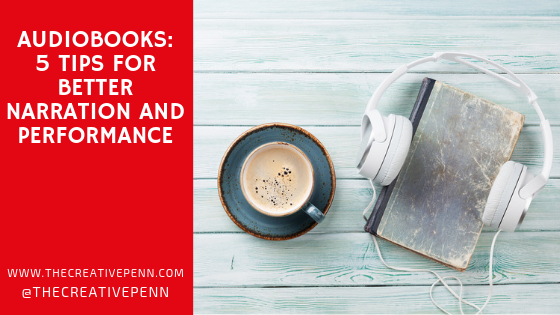 Are you interested in publishing your books in audio form?
Are you interested in publishing your books in audio form? If you’re writing non-fiction, include plenty of signpost words (“connectives”) to highlight change of flow.
If you’re writing non-fiction, include plenty of signpost words (“connectives”) to highlight change of flow.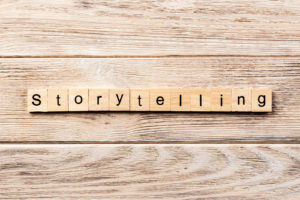 All writers use these to a degree, of course – the effects are just far more pronounced with the spoken word. However, not all words are equal.
All writers use these to a degree, of course – the effects are just far more pronounced with the spoken word. However, not all words are equal. When I first started writing stage plays, I realised how breathless my writing was when actors with well-trained lungs ran out of steam at the ends of lines. My writing soon sharpened up.
When I first started writing stage plays, I realised how breathless my writing was when actors with well-trained lungs ran out of steam at the ends of lines. My writing soon sharpened up. Conceive your next audiobook for performance from the start. Read it aloud while writing, to feel the rhythm and pace, and how the sentences rise and fall.
Conceive your next audiobook for performance from the start. Read it aloud while writing, to feel the rhythm and pace, and how the sentences rise and fall.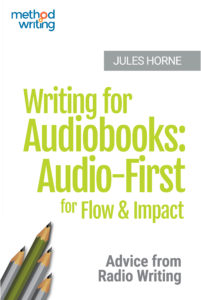
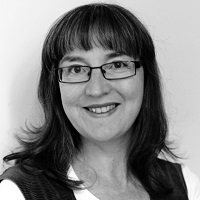 Jules Horne is an award-winning fiction writer and playwright. She teaches for the Open University and lives in the Borderlands – the part of Britain that inspired Game of Thrones.
Jules Horne is an award-winning fiction writer and playwright. She teaches for the Open University and lives in the Borderlands – the part of Britain that inspired Game of Thrones.